Etsy Quietly Adds China To Etsy Payment Eligibility List Via Payoneer Partnership
Etsy has quietly made changes to their payment policies that will open up the marketplace to sellers residing in China via existing partnership with Payoneer to process payments.
The payment terms were updated on March 4, 2024 with the only change being the addition of China to the list of countries were sellers can onboard to Etsy Payments by registering with Payoneer.
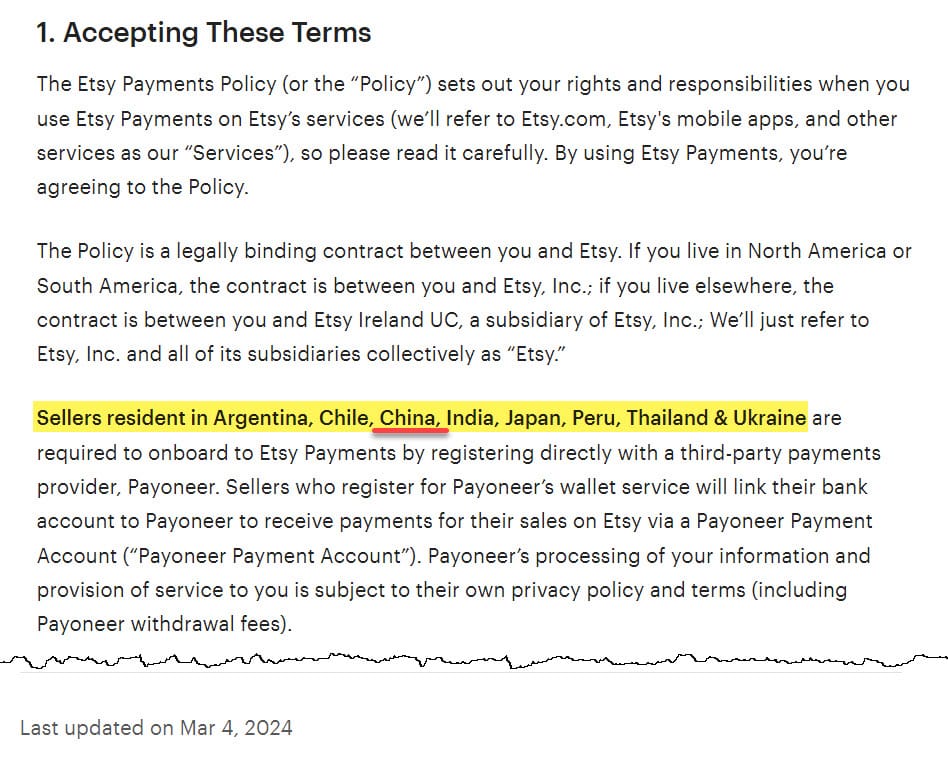
Ther Internet Archive Wayback Machine shows in January 2024, this page still only listed Argentina, Chile, India, Japan, Peru, Thailand & Ukraine as countries which would need to use Payoneer.
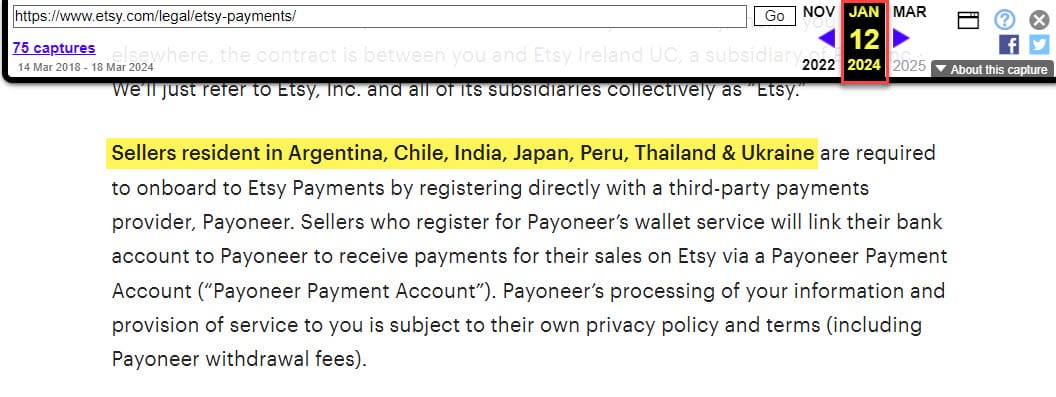
China has now also been added to Etsy's help pages for Countries Eligible for Etsy Payments and How Do I Use a Payoneer Account With Etsy Payments.
It's not clear if new sellers being onboarded from China will be subjected to the $15 shop set up fee, ID checks and delayed payouts Etsy recently introduced to "keep the community safe."
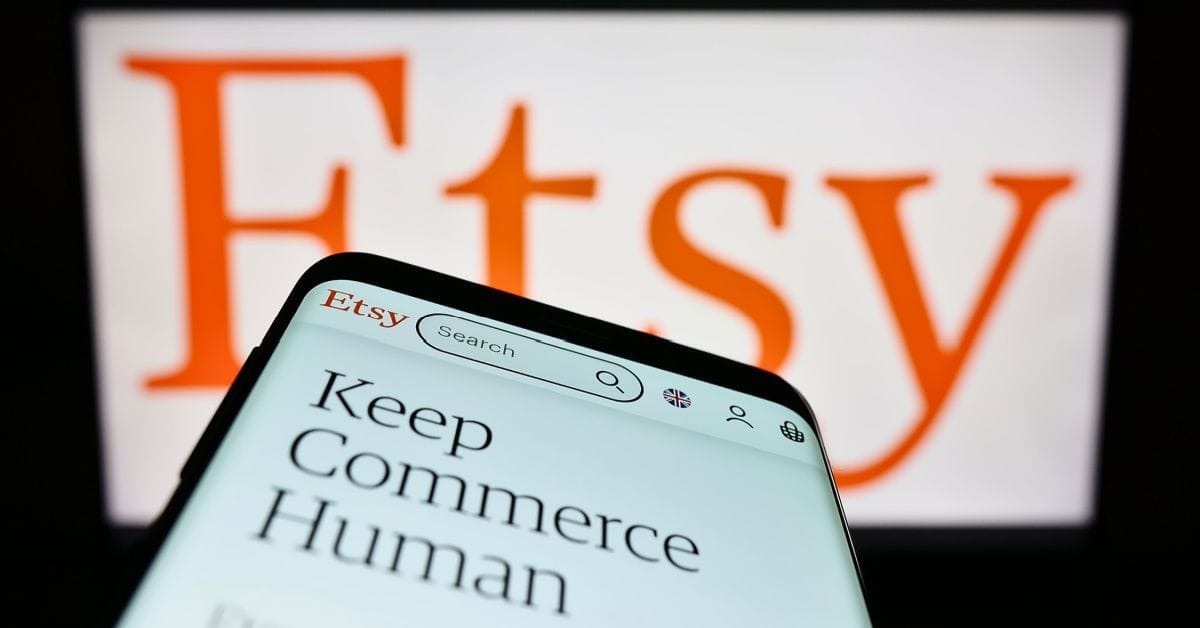
Etsy had proudly announced their partnership with Payoneer in October 2023 that allowed them to extend Etsy Payments to sellers in Ukraine, India, Japan, Thailand, Argentina, Chile and Peru with a company blog post by VP GM Payments and Risk Chirag Patel extolling the benefits of Etsy's "multimarket payment expansion."
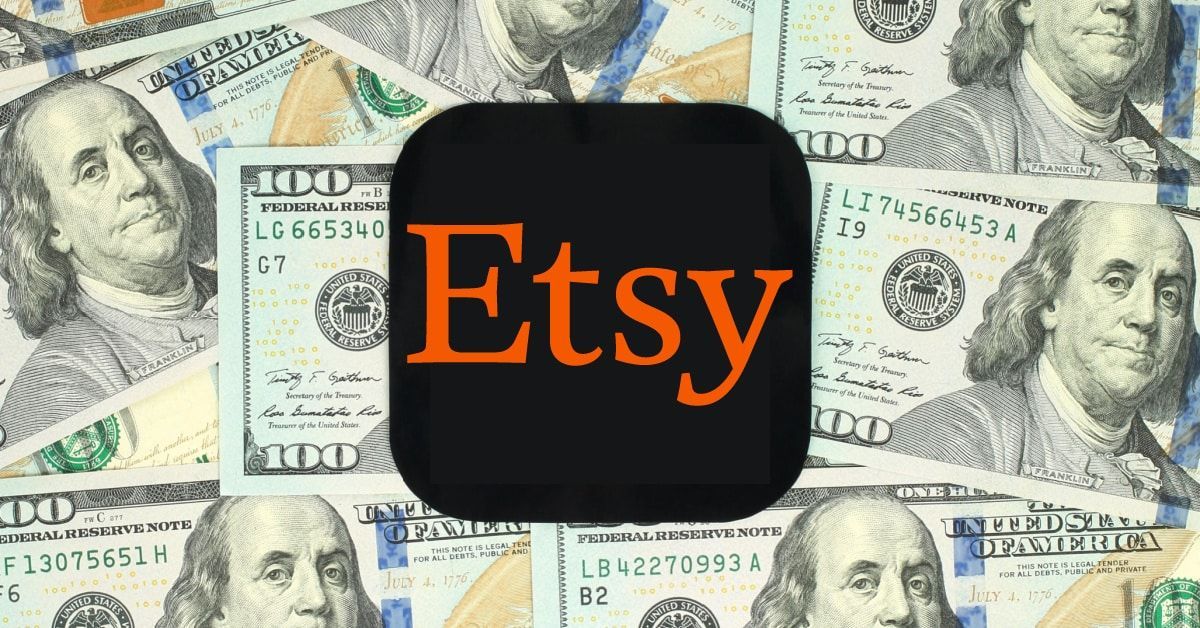
So why did it take longer to add China to the list and why has there been no similar fanfare over this seemingly significant expansion?
As Etsy seller and ecommerce consultant Cindy Baldassi points out, this development marks the first time since early 2021 that new sellers in China will be able to set up shop on the platform, and it could potentially just be in beta testing before Etsy makes a big announcement.
But Etsy has also long been criticized for allowing mass produced items from Aliexpress and others to be sold on the site in violation of their handmade policies, as well as counterfeit and IP-infringing items, and this move is not likely to lessen seller and investor concerns about illegal or policy violating items flooding the marketplace.
While Etsy says it has stepped up enforcement in recent times, the increasing use of AI has led to many legitimate handmade items being caught in the automated bot dragnet, harming real sellers while leaving some of the most egregious violators free to sell on the site.
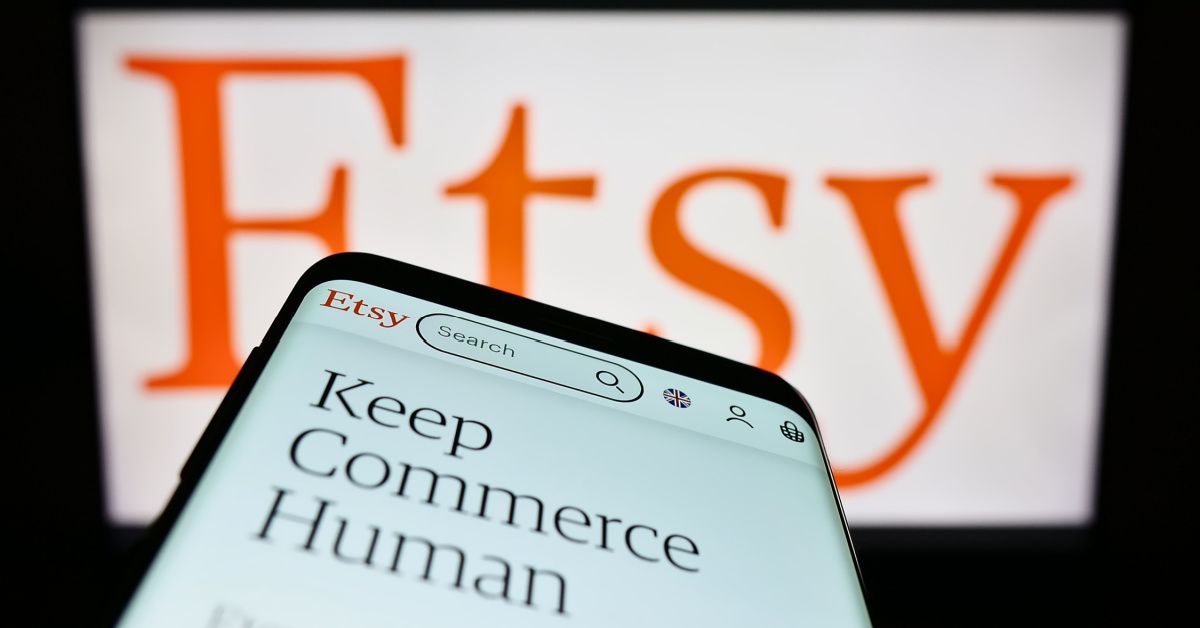
At the same time, Etsy has come under increased pressure to cut costs and increase revenue since notorious activist investor Elliott Management took a 13% stake in the company and a new seat on the board.
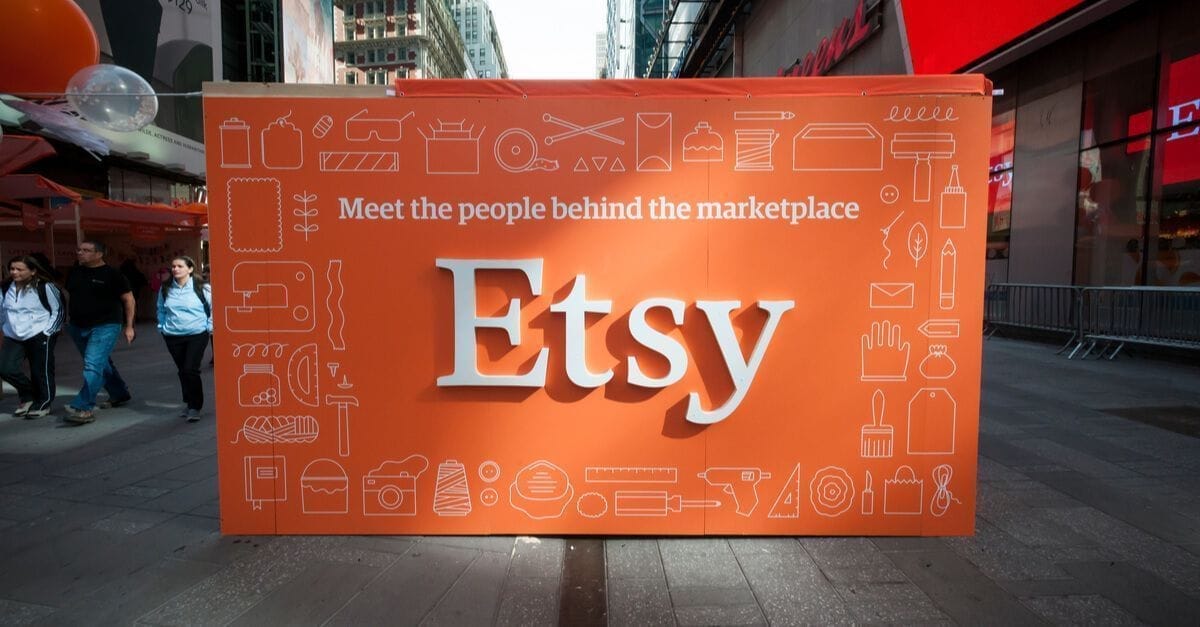
That pressure has already been felt with initiatives at Reverb and Depop to try to make Etsy's House Of Brands finally start paying off, plus surveying sellers to test out sentiment on potential listing fee increases and monthly subscription services.
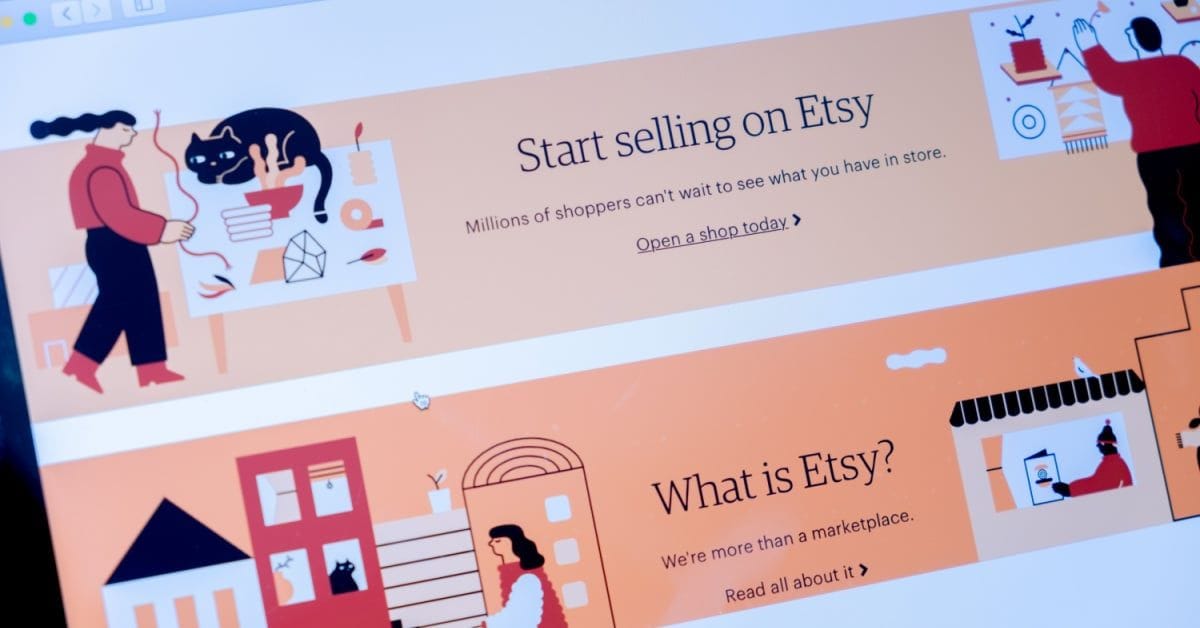
While CEO Josh Silverman still touts the "uniqueness" of Etsy as a differentiator, he has moved away from the specifically handmade focus in recent years in attempts to broaden the marketplace's appeal to drive active buyer and sales growth.
On the Q4 2023 earnings call, Silverman acknowledged that "some of what makes us special is also what's historically held us back."
While we have an opportunity to continue to enhance our offering to deliver on the table stakes e-commerce expectations, we also stand for something more: we offer something different in a sea of sameness. Which is why highlighting the best stuff remains one of our top focus areas, and we're confident that we can get back to growing faster and taking share more broadly...
...As we built our plans to reaccelerate growth this year, we've been very clear-eyed about where we are today, where our competitors are and where our strengths lie.
Some of what makes us special is also what's historically held us back from being thought of for everyday purchase needs. Buyers too often think of Etsy only for very specific needs or at the end of their shopping journey, or it simply takes too much time and effort to find the best things among our now over 100 million items.
Silverman also faced questions from analysts about the degree to which Chinese ecommerce apps Temu and Shein may be taking market share and/or competing against Etsy for advertising space on Google and other channels.
During that same earnings call, Lee Horowitz with Deutsche Bank asked:
Josh, you highlighted two charts in the deck, one that shows the Etsy's share gains versus pure-play comps. It seems to stand somewhat in contrast to the overall e-commerce market where Etsy is growing more slowly. It seems that would suggest that big-box non-pure-play competitors are taking share of the overall.
Why do you think consumers are leaning into these platforms that, as you say, compete on shorter speeds, perhaps a couple of bucks in price and not leaning into things like product quality or uniqueness?
Silverman answered:
If you look at e-commerce very broadly, it picks up things that are totally unrelated to Etsy. When you put those aside and you really look at just product, it's very clear that the people gaining share are Amazon, Walmart, Temu, and SHEIN, and almost everyone else is losing share. The number of other people that are growing quickly, you can count on one hand. Almost everyone is losing share to Amazon, Walmart, Temu, and SHEIN.
And so, first of all, those are people, particularly if we look at Amazon and Walmart, and they're really the big winners. So if you look at who is actually, in terms of volume, taking volume in e-commerce, they sell essentials. And when you read their earnings call scripts, what they say in their earnings call is what's driving their sales is essentials and their headwinds are discretionary products.
The second thing is all four of those brands stand for deep discounting. And the trends we see right now are people feel their wallet is under a lot of pressure. By the way, tax returns look like they're going to be lower this year than they were last year. You still hear low consumer confidence and concerns about inflation on core things like food prices. And people, when they have discretionary dollars, want to spend them on travel and want to spend them on dining.
And so in this moment, many people are looking for the cheapest way to buy something when they need to buy something that is discretionary.
The timing of opening up Etsy Payments to onboard sellers in China in the last month of Q1 suggests Silverman may be more nervous about those competitors than he is letting on and could be hoping it will provide a much needed end of quarter revenue bump.
But the lack of attention being brought to the change also suggests as badly as they may need that bump, they are not quite ready to deal with the public backlash that is almost certain to come from opening up the floodgates to more overseas sellers.
Is Silverman taking a "if you can't beat 'em, join 'em" approach to challenges posed by rising popularity of Temu and Shein?
It will be interesting to see how this change reflects in their Q1 financial reports.
In the meantime, let us know in the comments below what you think of Etsy enabling Etsy Payments for sellers in China!


















